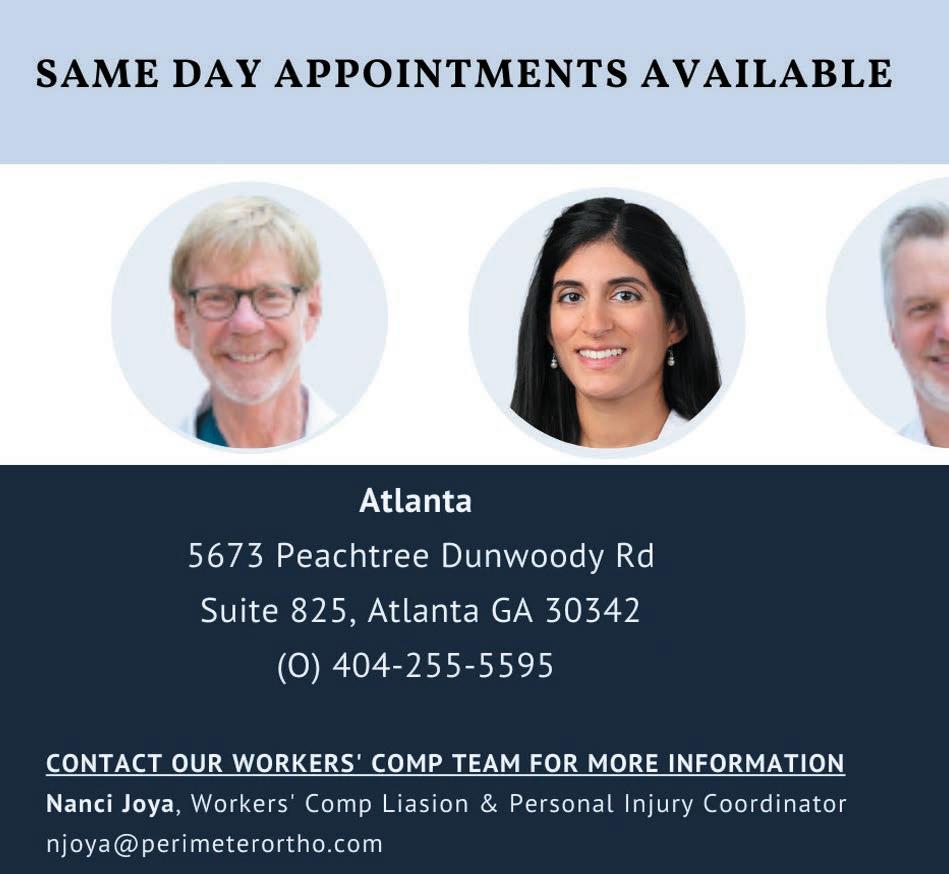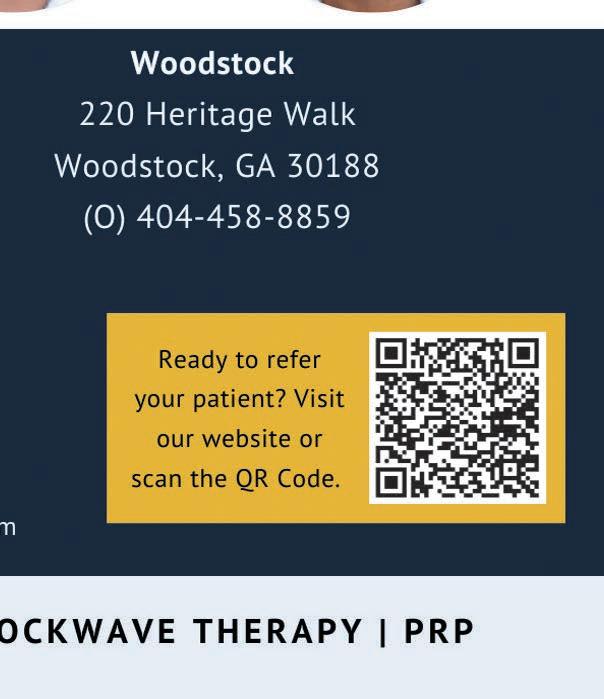
3 minute read
Taking the Risk Out of Light-Duty Work
Dustin S. Thompson, Swift, Currie McGhee, Hiers, LLP
One of the most effective ways to mitigate exposure and accelerate resolution in a Workers’ Compensation claim is an employer’s ability to safely return injured workers to light-duty work.
Despite the favorable impact of light-duty work, employers are often wary of bringing injured employees back to work. Moreover, once income benefits are commenced, Georgia law, in particular the WC-240 process, requires a rather rigorous and, at times, complicated procedure to bring injured workers back to a light duty. Although perceived as risky and complicated, establishing light-duty positions and safely bringing injured employees back to work does not have to be.
Procedures to bring employees back to light-duty work should be in place in advance of any work accident. The employer’s ability to immediately offer light-duty work following the assignment of work restrictions is crucial because it bypasses the WC-240 process. Statistics further show claims are open longer when light-duty work is not available or utilized. If possible, employers should have established light-duty positions ranging from sedentary to those with lifting limitations.
Once income benefits are paid, Georgia law requires employers to follow the WC-240 process to return employees to light-duty work and suspend income benefits. The process can be found at O.C.G.A. §34-9-240. A written description of the offered light-duty position must be sent to the authorized treating physician (ATP). This is typically performed by the employer completing a WC-240a job analysis form. It is more effective to provide as much detail about the position on the WC-240a, which includes dedicated space to address standing, sitting, lifting, carrying, pushing, pulling, etc.
When sending the WC-240a to the ATP, the injured worker and the injured worker’s attorney must be copied. The ATP will then indicate whether the claimant is released to the described job, is unable to perform the described job, or is instead released to a job with modified restrictions. The WC-240a form must be executed by the ATP within 60 days of treatment. Once the WC-240a is signed by the ATP, a WC-240 (notice the missing “a”), which details the authorized light-duty job and provides a date to return to attempt the position with a minimum of 10 days’ notice, must be provided to the injured worker and their attorney.
If there are issues with obtaining the ATPs authorization of the described light-duty job, it may be helpful to provide more details about the position. A creative solution to help the ATP better understand the light-duty position is for the employer to film the actual work area and job being performed and then provide the video to the ATP for review.
On the date the light-duty job is set to begin, employers must ensure the supervisors and workers in the area understand the restraints of the position and avoid asking the employee to perform work in excess of those parameters. It is also prudent to instruct the employee to immediately report issues with performing the light-duty job. If issues are reported, have the employee provide a written statement about any inability to perform the job. The employee, coworkers, and supervisors being on the same page about the parameters of the light-duty work creates a higher probability for the job to be performed safely and longer, and thus reduces the risk of liability for the employer.
When the employee returns to the authorized light-duty job or if the employee refuses to return on that date, a WC-2 should be filed with the State Board attaching the WC-240a and WC-240 noting the suspension of income benefits. If the employee works more than eight cumulative hours or one scheduled workday, whichever is greater, but less than 15 days, income benefits must be reinstated immediately. Otherwise, the employer waives the defense the employee unjustifiably refused to perform the light-duty position.
The employer should maintain an open line of communication with the employee to ensure the safe performance of the light-duty job and to ensure the job is modified as treatment progresses and work restrictions change. The employer should further ensure the employee is providing copies of every new work status report to confirm the light-duty job remains appropriate. Ultimately, the employee’s performance of light-duty work should benefit their medical treatment and potentially provide a quicker return to regular duty.
To avoid the time and complications of the WC-240 process, the most effective avenue to navigate light-duty work is for employers to establish light-duty positions before work accidents occur. With a range of light-duty positions readily available to injured workers, the employer can immediately offer light-duty work following the assignment of work restrictions and avoid the hassle of the WC-240 procedures. When such positions are not immediately available, the employer can follow the foregoing steps to meet the requirements of the WC-240 process once income benefits are commenced. If in the WC-240 process, the best strategy for success is to provide the ATP with detailed information about the position and maintain an open line of communication with the employee and their supervisors about the parameters of the light-duty job.









